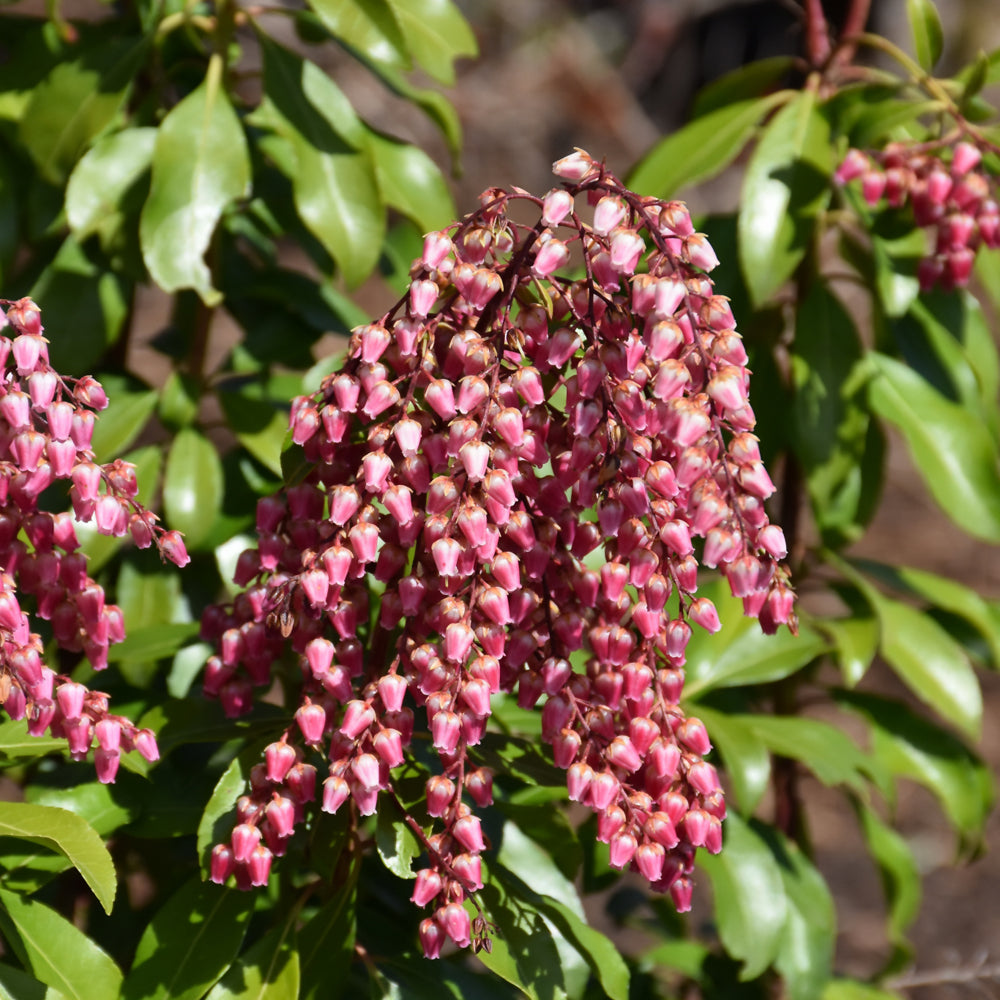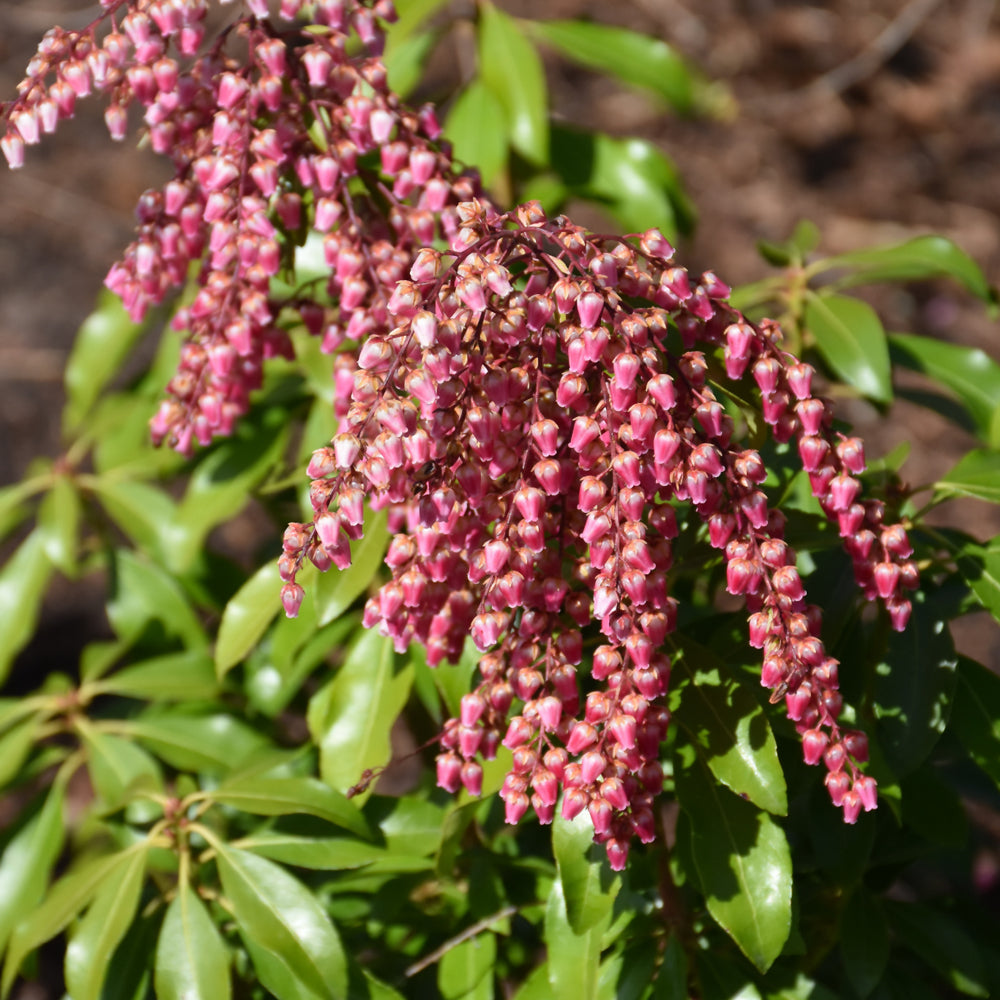Interstella® Lily of the Valley Shrub
Interstella® Lily of the Valley Shrub
|
|
Browse More Shrubs |
Shipping for other products is calculated at checkout.
Couldn't load pickup availability
Botanic Name: Pieris japonica 'FARROWPJRF'
Description: A highly ornamental selection, prized for its early blooming, showy chains of ruby-red bell-shaped flowers and bright red emerging foliage; a dense and compact variety; performs best in moist, organic and acidic soils
Landscaping Attributes
Landscaping Attributes
Interstella® Lily of the Valley Shrub is a dense multi-stemmed evergreen shrub with an upright spreading habit of growth. Its average texture blends into the landscape, but can be balanced by one or two finer or coarser trees or shrubs for an effective composition.
This shrub will require occasional maintenance and upkeep, and should only be pruned after flowering to avoid removing any of the current season's flowers. Deer don't particularly care for this plant and will usually leave it alone in favor of tastier treats. It has no significant negative characteristics.
Interstella® Lily of the Valley Shrub is recommended for the following landscape applications;
Accent, Mass Planting, Hedges/Screening, General Garden Use
Ornamental Features
Ornamental Features
Interstella® Lily of the Valley Shrub features dainty chains of ruby-red bell-shaped flowers with white overtones hanging below the branches from late winter to late spring that fade to pink over time. It has attractive dark green evergreen foliage which emerges red in spring. The glossy narrow leaves are highly ornamental and remain dark green throughout the winter.
Planting & Growing Tips
Planting & Growing Tips
Interstella® Lily of the Valley Shrub will grow to be about 4 feet tall at maturity, with a spread of 4 feet. It tends to fill out right to the ground and therefore doesn't necessarily require facer plants in front. It grows at a slow rate, and under ideal conditions can be expected to live for 40 years or more.
This shrub performs well in both full sun and full shade. It requires an evenly moist well-drained soil for optimal growth, but will die in standing water. It is very fussy about its soil conditions and must have rich, acidic soils to ensure success, and is subject to chlorosis (yellowing) of the foliage in alkaline soils. It is somewhat tolerant of urban pollution, and will benefit from being planted in a relatively sheltered location. Consider applying a thick mulch around the root zone in winter to protect it in exposed locations or colder microclimates. This is a selected variety of a species not originally from North America, and parts of it are known to be toxic to humans and animals, so care should be exercised in planting it around children and pets.
More Info...
More Info...
Hardiness Zone: 5
Sunlight: Full Sun To Shade
Height: 4 feet
Spread: 4 feet
Photo Credits: NetPS Plant Finder
Share




